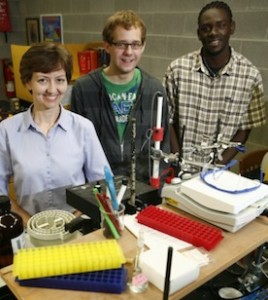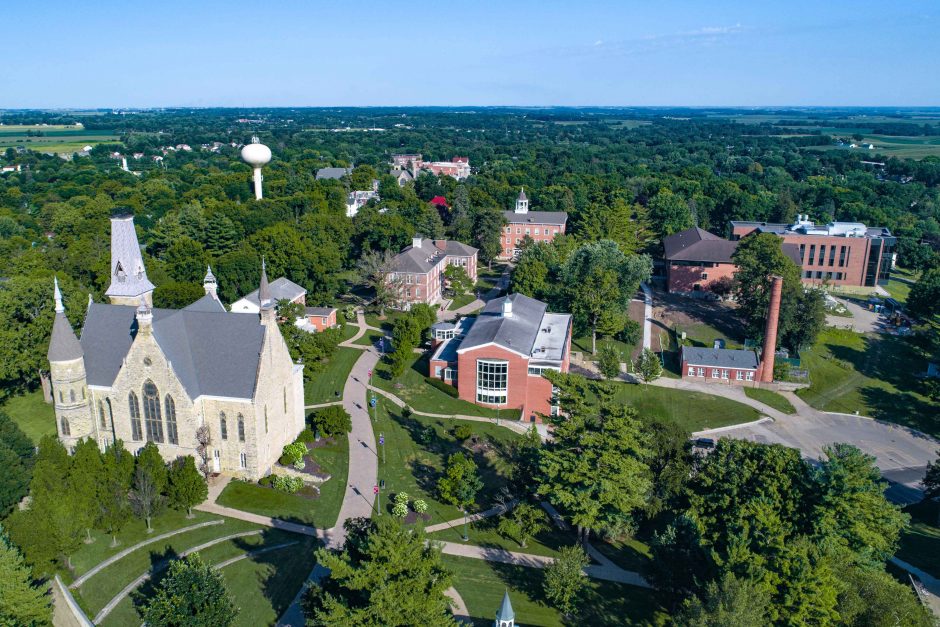Chemistry students contribute to ALS research
During summers on the Hilltop, students join with chemistry professor Cindy Strong to study a potential cause of amyotrophic lateral sclerosis, better known as ALS or Lou Gehrig’s disease. In particular, they study an enzyme that has been implicated as a factor in some cases of the disease.

Strong’s lab works to produce mutant forms of the enzyme in the bacterium E. coli. They then purify the altered proteins and study their ability to bind zinc and copper — the two metals critical to their proper functioning.
Sean Lehman of Spencer, IA, and Emmanuel Koli of Accra, Ghana, both worked with Strong during the summer of 2007.
“I found summer research to be incredibly useful in giving me a chance to truly apply what I have learned in class,” says Lehman, “not just in a controlled classroom laboratory setting, but in a more independent and meaningful way. If I would suggest something to Professor Strong, either a new experiment or an alteration of an existing one, most of the time she would respond with ‘Oh, really? That sounds interesting. Let’s do it!'”
Lehman adds that the experience helped him build skills in critical thinking, planning, and analysis.
“I plan to be a forensic toxicologist,” he says, “and while the research I did does not directly relate to that, it is still very meaningful. The skills I developed and the techniques I utilized are essential techniques in the fields of biology and chemistry. For example, I did a lot of agarose gel electrophresis, and DNA forensic analysis utilizes more advanced versions of the exact same technique.”



